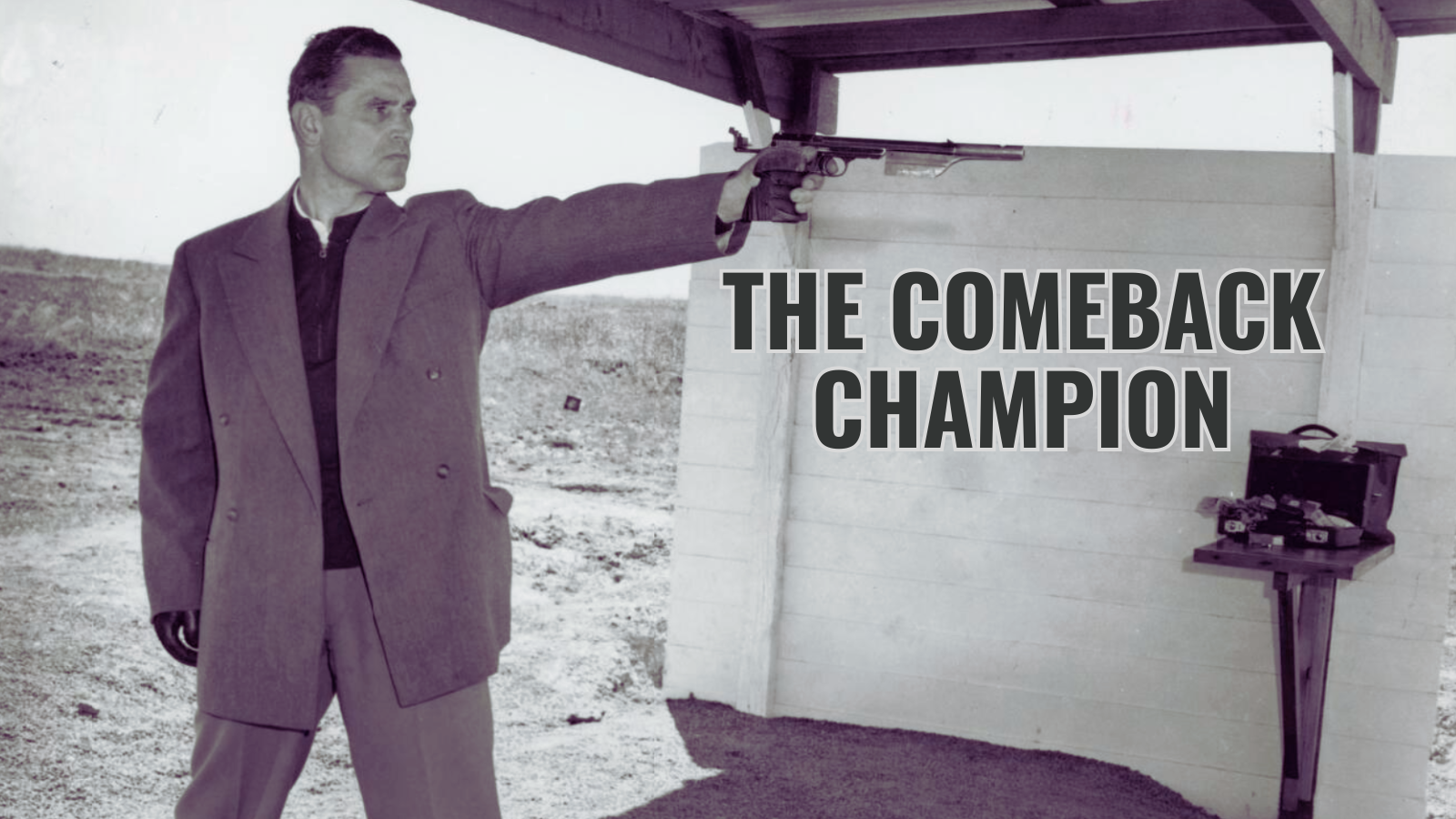Károly Takács: The Soldier Who Became an Olympic Champion Against All Odds
Most of us dream of achieving greatness. We picture ourselves standing on the podium, being celebrated for our skills and determination. But what happens when life suddenly snatches away the very ability you’ve been working on for years? For most people, that would be the end of the story.
For Károly Takács, however, it was just the beginning.
A Soldier with a Dream
Károly Takács was born in Budapest, Hungary in 1910. From an early age, he developed discipline and resilience through military service. He served as a sergeant in the Hungarian army, but his true passion lay elsewhere — in the precise art of sport shooting.
By the late 1930s, Takács had already established himself as one of Hungary’s finest pistol shooters. He was dominating national competitions and becoming well known in the shooting community. His eyes were set on the 1940 Tokyo Olympics, where he was expected to compete among the world’s best.
For him, the path seemed clear: years of preparation, hard work, and training were leading toward Olympic glory. Friends, fellow soldiers, and sports officials alike believed he would bring honor to Hungary. The future looked secure and full of promise.
The Accident That Changed Everything
Then, in 1938, everything changed.
During a routine army training exercise, a faulty hand grenade exploded in Takács’s right hand — his dominant shooting hand. In an instant, the hand that had made him a champion was destroyed. The dream that had driven him for years seemed to vanish in the smoke of that explosion.
To the outside world, the story was over. How could a shooter compete without his shooting hand? Most people would have accepted this cruel twist of fate, resigning themselves to a lifetime of regret and “what ifs.”
But Takács was not “most people.”
Choosing Determination Over Defeat
Instead of giving in to despair, Takács made a decision that would define the rest of his life. He quietly chose not to let this setback end his career. If his right hand was gone, then he would simply retrain himself to shoot with his left hand.
It was a decision that sounded absurd to others. Shooting at the Olympic level requires extreme precision, refined over years of training. Switching to the non-dominant hand seemed impossible. But Takács didn’t waste time arguing with doubters or seeking sympathy.
He simply got to work.
Training in Silence
For months, Takács trained relentlessly — often in private, away from the public eye. He rebuilt his technique from scratch, forcing his left hand to learn what his right had once mastered.
This was not a quick or easy process. It required countless hours of repetition, frustration, and pain. But Takács never complained. He didn’t announce his comeback or demand recognition. He chose to let his actions, not his words, speak for him.
By the time he reemerged in competitions, he wasn’t just “good with his left hand.” He was world-class. His rivals and even his supporters could hardly believe it. The man who was supposed to be finished was once again at the top of the leaderboard.
Triumph on the Biggest Stage
World War II delayed the Olympics in 1940 and 1944, but when the Games finally returned in 1948, Takács was ready. At the London Olympics, he stepped onto the firing line, not as a victim of misfortune, but as a man who had rebuilt himself entirely.
To the astonishment of the sporting world, Károly Takács won the gold medal in the 25-meter rapid-fire pistol event.
It was one of the greatest comebacks in sports history. But his story didn’t end there.
Four years later, at the 1952 Helsinki Olympics, Takács once again proved his dominance by winning a second consecutive gold medal in the same event. The man who had once been told his shooting career was finished stood on the top of the podium twice, against the best shooters in the world.
Even in 1956, when he competed in Melbourne, he was still among the world’s elite, finishing eighth.
Lessons from Takács’s Journey
Károly Takács’s story is more than just a sports biography. It is a powerful lesson in human resilience, the ability to adapt, and the courage to keep moving forward when life delivers crushing blows.
Here are some of the timeless lessons his journey teaches us:
1. Your setback doesn’t define you.
Losing his shooting hand could have ended his career, but Takács refused to let the setback become his identity. Instead, he chose to redefine himself and create a new future.
2. Work quietly, let results speak.
Takács didn’t waste time seeking pity or sympathy. He trained in silence, building his skills until his success was undeniable. Sometimes the best way to answer doubt is through quiet action.
3. Adaptability is strength.
Life will not always go as planned. Circumstances change, accidents happen, and opportunities vanish. But like Takács, if you can adapt to new realities instead of clinging to the old, you can still find success.
4. Persistence beats talent.
Many of his competitors were naturally gifted shooters, but what separated Takács was his persistence. When talent faltered, his grit carried him to victory.
Final Thought
Life will always present us with unexpected challenges. Sometimes, they come as sudden and devastating as a grenade — an accident, a failure, a lost opportunity. In those moments, it is easy to believe the story is over.
But Károly Takács shows us another way. Even when fate takes away your strongest weapon, you can build another one. Even when the world counts you out, you can train in silence until the world has no choice but to witness your triumph.
The question is not whether setbacks will come — they will. The question is whether you will give up, or whether you will rise, adapt, and keep going until your victory becomes impossible to ignore.
Károly Takács chose the latter. And so can you.


